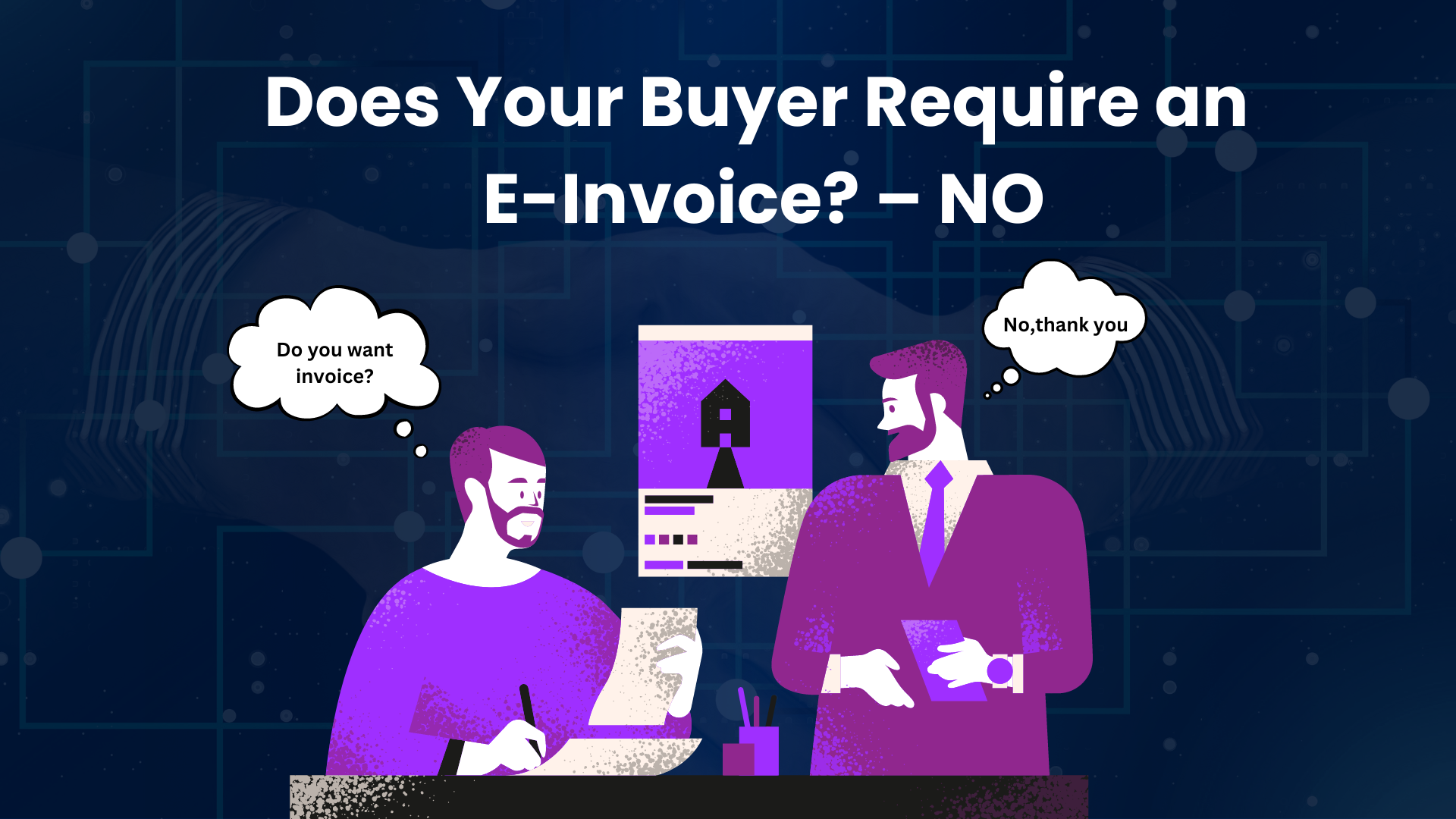-
Sep, Sat, 2024
Scenario 2: When the Buyer Does Not Require an E-Invoice – Consolidated E-Invoice
When a Buyer does not require an e-Invoice, the Supplier will issue a normal receipt to the Buyer, consistent with current business practice. However, this receipt will not be submitted for IRBM’s validation since it is not an e-Invoice.
Suppliers are allowed to aggregate transactions with Buyers who do not require an e-Invoice on a monthly basis and submit a consolidated e-Invoice to IRBM within seven (7) calendar days after the month ends.
Before we proceed, let’s take a moment to recall the key concepts highlighted in our graphic overview. Understanding these fundamentals is crucial for navigating the e-invoicing landscape effectively.

Now, let’s dive into a specific scenario: when a Buyer does not require an e-Invoice.
How to Create a Consolidated e-Invoice:
Suppliers have a couple of options for how to put together these consolidated e-Invoices:
-
- Separate Line Items: List each receipt as a separate line item in the consolidated e-Invoice.
-
- Continuous Receipt Numbers: Keep the receipt numbers in a continuous sequence. If there’s a break, start a new line item for the next chain.
-
- Branch-Based Submission: If the Supplier has multiple branches, they can submit consolidated e-Invoices for each branch using either of the above methods.
Important Notes
Just a heads-up: Consolidation does not apply to self-billed e-Invoices, except in the following cases:
-
- When dealing with individuals who aren’t in business
-
- For interest payments to the general public
-
- For claims or benefits from insurance companies to individuals
Steps to Issue a Consolidated e-Invoice
Where a Buyer does not require an e-Invoice, the steps involved for issuing a consolidated e-Invoice are:
-
- Step 1: Check with Buyers to see if they need an e-Invoice.
-
- Step 2: If they confirm they don’t need one, the Supplier will issue a regular receipt.
-
- Step 3: Within seven (7) days after the month ends, the Supplier should gather all the receipt details from that month and create a consolidated e-Invoice.
-
- Step 4: Make sure the consolidated e-Invoice has all the required fields as laid out in the e-Invoice Guideline.
Information Required for the Consolidated e-Invoice
Suppliers must complete the required fields outlined in Appendices 1 and 2 of the e-Invoice Guideline and include the Buyer’s details and certain transaction details, such as:

*Note: Resource from LHDN Guideline
Real-Life Scenario
Let’s look at a practical example to make things clearer.
CityMart Sdn Bhd is a friendly grocery chain with two branches—one in Johor Bahru and another in Kuching. In October 2025, CityMart issued regular receipts for all sales, with no e-Invoices requested. Here’s how things shaped up for them:
- Johor Bahru Branch: 400 transactions totaling RM18,000
- Kuching Branch: 1,500 transactions totaling RM55,000
To follow the guidelines, CityMart prepared separate consolidated e-Invoices for each branch by 7 November 2025. They grouped their receipts into continuous sequences and listed them as line items for both branches, ensuring they included all the receipt reference numbers in the “Description” field.
Pro Tip: Another grocery store, AllMart Sdn Bhd, decided to list each receipt as a single line item in their consolidated e-Invoices. Different approaches can work as long as they follow the guidelines!
What’s Next?
In our next post, we’ll dive into Disbursement and Reimbursement, where we’ll discuss how Suppliers should handle these transactions and stay compliant with the latest e-Invoice rules. Stay tuned for more helpful insights and tips!


